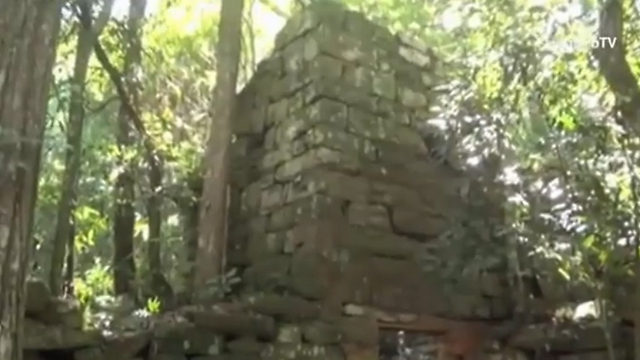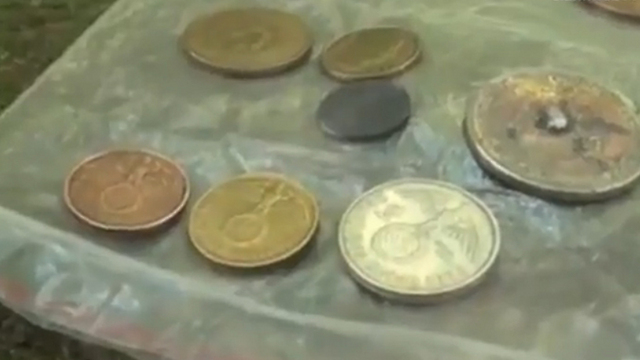Argentine archeologists find 'secret Nazi jungle hideout'
Archeological crew finds stone structures in jungle near border with Paraguay with German coins from the late 1930s and Nazi symbols on the walls believed to be strategic hide out made for Nazi leaders in case they would need to flee Germany.
Published 03.23.15, 22:36, Source
An Argentine archeological crew is investigating remains found in a jungle near the country's border with Paraguay, which they believe used to be a secret Nazi hideout, according to a report by The Telegraph.
In the stone structures, which can only be reached with the use of machetes as they are covered in vines, archeologists found German coins from the late 1930s, porcelain fragments which had "Made in Germany" written on them and Nazi symbols on the walls.

The archeologists believe that the isolated buildings were designed to be shelters for leaders of the Third Reich in case they needed to flee Germany.
"We can find no other explanation as to why anyone would build these structures, at such great effort and expense, in a site which at that time was totally inaccessible, away from the local community, with material which is not typical of the regional architecture," said Daniel Schavelzon, the leader of the archeology team, to the Telegraph.

German coins found in structure.
Schavelzon, a researcher at the University of Buenos Aires, spent months in the Teyu Cuare provincial park, where the site was found, in the Misiones region of northern Argentina, according to the report.
According to local myths, the house belonged to Martin Bormann, who was known as Hitler's right-hand-man, according to the Telegraph.
Bormann committed suicide in 1945 and according to Schavelzon, there was no evidence to support the "urban myth." Schavelzon instead sticks to his prediction that the structure were built as a refuge for Nazi leaders in case they needed to run away from Germany.
Schavelzon told the Argentine newspaper Clarin that the Nazis had a secret project that emerged halfway through World War II to build shelters in remote locations in the event of defeat.
Schavelzon said they were "inaccessible sites, in the middle of deserts, in the mountains, on a cliff or in the middle of the jungle like this," said Schavelzon to Clarin.
The Argentine archeologist said his findings were not definite but that he was convinced of their veracity.
Schavelzon pointed out that the site was strategically chosen as it allowed its inhabitants to cross over to Paraguay in less than 10 minutes. However, the Nazis did not end up needing the site as they were welcomed in Argentina and allowed to live openly with the blessing of former president Juan Peron, who served as president between 1946 to 1955 and again briefly in the 1970s.
An estimated 5,000 Nazis found their way to Argentina. In fact, in 1960, notorious Nazi Adolf Eichmann, was captured in Buenos Aires by the Israeli Mossad and taken to Israel where he was tried and executed.
